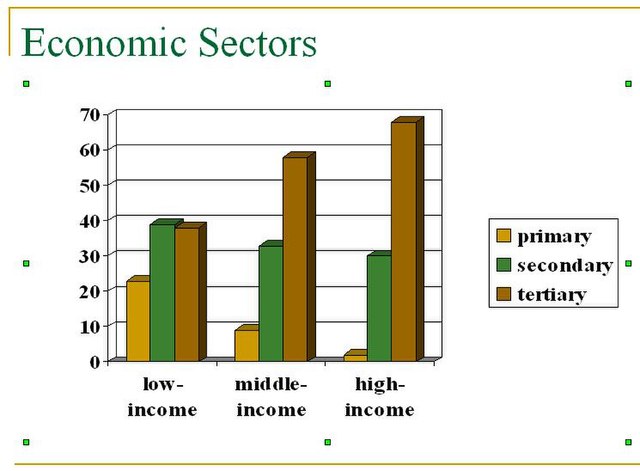Secondary sector of the economy
In macroeconomics, the secondary sector of the economy is an economic sector in the three-sector theory that describes the role of manufacturing. It encompasses industries that produce a finished, usable product or are involved in construction.
Image: The woman making a carpet and watching TV series
The three-sector model in economics divides economies into three sectors of activity: extraction of raw materials (primary), manufacturing (secondary), and service industries which exist to facilitate the transport, distribution and sale of goods produced in the secondary sector (tertiary). The model was developed by Allan Fisher, Colin Clark, and Jean Fourastié in the first half of the 20th century, and is a representation of an industrial economy. It has been criticised as inappropriate as a representation of the economy in the 21st century.
This figure illustrates the percentages of a country's economy made up by different sector. The figure illustrates that countries with higher levels of socio-economic development tend to have less of their economy made up of primary and secondary sectors and more emphasis in tertiary sectors. The less developed countries exhibit the inverse pattern.


